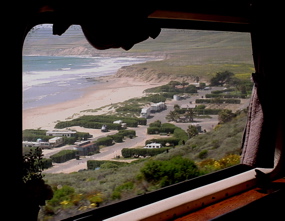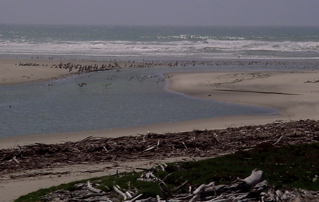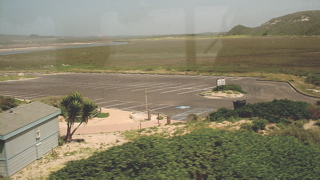Remember when
Reader's Digest had a section
titled,
"The Most Unforgettable
Character"? Well, I was assigned to write a story
about a most unforgettable character, a Parlour Car
Attendant on the Amtrak Coast Startlight from Los Angeles, California,
to Seattle, Washington, May 8 and 9, 2006. If you've ridden
the Coast Starlight, you know that Sleeper Car Passengers on Train
14 (northbound) and Train 11 (southbound) have a
parlor car, exclusively for their use during their trip, between their
sleeper accommodations
and the diner. The Coast Starlight is the only Amtrak train in
American with such a car. This car has a full-time attendant, one
each on the four train sets, who tends to the needs of the sleeping
car passengers, making it a more pleasant trip than being in their
sometimes cramped rooms for the 1389 miles (two days and a night) from
Los Angeles to Seattle.
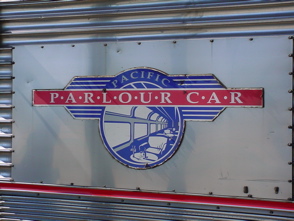
After we boarded Train 14 in Los Angeles, while sitting in our tiny
Economy Bedroom, we heard an announcement: "Sleeping Car
Passengers are invited to come to the Parlour Car for coffee, juice,
and pastries; and to hear an "Orientation" of the train and the
trip. Little did we know that we would not return to our room
until after dinner that evening! I said to my traveling partner,
Don, "That must be Richard
Talmy, the Parlour Car Attendant, let's get down there while the train
is still stable here in the station."
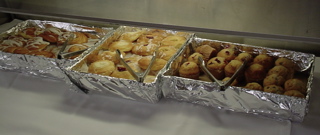
It was about 9:45 a.m. when we arrived in the Pacific Parlour Car, and
Richard had already served many guests their
morning drink of choice, and they had selected pastries (above) from a
serving
table in the middle of the car. When i approached Richard at the
end of the car, he knew who I was, even though he had never seen
me. We had corresponded to be sure I was on his train this
Monday, May 8. He was very pleasing to meet and accommodating,
just as if we'd known each other for some time.
The upper level of the Parlour
Car consists of six 4-seat booths, each with a table; a lounge area
with sofa type seating for eight guests with drink tables in front; and
eight upholstered 'parlor chairs' for a total seating capacity of 40
plus standing room at the bar.
Richard began the Orientation by mentioning that this was his first
trip with the new dining service, Simplified Dining. He proceeded
to give all sleeping car passengers their lunch dining time of their
choice. He further explained that the Coast Starlight was the
only train that has a Parlour Car.
He mentioned that there was an 11th Commandment on this train, "Though
shall not count calories," and further said that if we were taking the
train all the way to Seattle, we would have: two wine tastings of
3 wines each,
two continental breakfasts, two regular breakfasts, two lunches, and
two dinners, all included in the price of our sleeping car ticket!
The layout of the train, he mentioned, was: Sleeping cars up
front, then the Parlour Car, followed by the dining car, the
lounge/snack bar car, and finally the coaches. One coach car has
a Kiddie Room on the lower level for the 2 to 11 year olds.
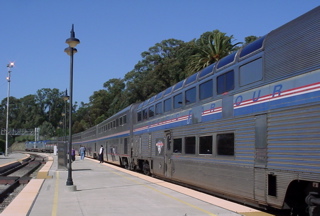
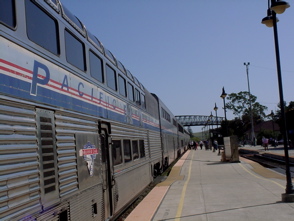
Front of the Coast
Starlight
Back of
the Coast Starlight
The only Parlour Car items that are not included in the room price are
alcohol
drinks and gratuities. Cocktails will be served in
glass glasses
and you may have a tab. Specialty wines, six bottles, will be
served at the two wine tasting times on this trip.
Richard has a table of souvenirs, the wines for this trip displayed on
the bar with a sign showing the time of tasting, the movie names and
times. Since the tasting is for adults only, a movie for kids
will be shown in the lower level at that time.
The three wines today will be a chardonnay, pinot noir, and
Symphony. Cheese and crackers will be provided during
tasting. I could see that Richard has all 6 wines, with
descrptive labels and prices, on the bar.
